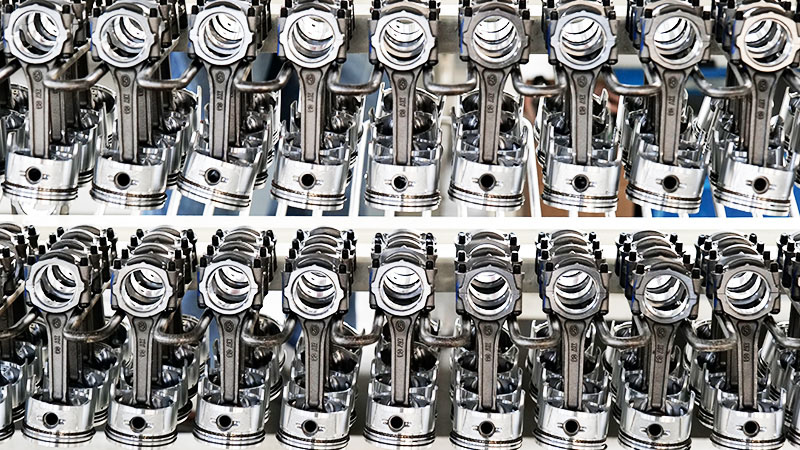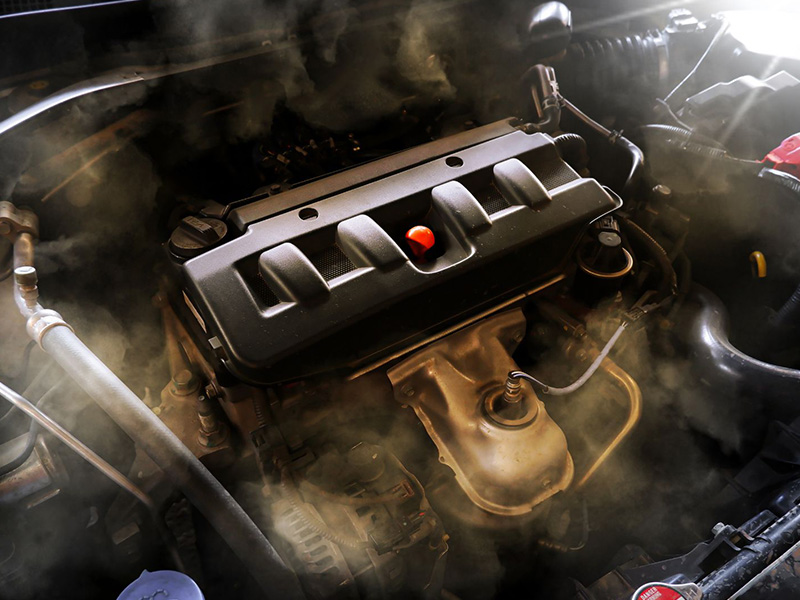The combustion chamber keeps the burning fumes confined in a running engine. The high-pressure gas may sneak past the piston rings to enter the crankcase. And you’re all set to deal with engine blow-by with excessive leaks.
The issue may sound minor, but it can eventually affect the overall engine performance. Expensive repairs aren’t behind when ignored for long. Understanding blow-by is obligatory for anyone invested in engine reliability.
This article presents the root causes, symptoms, impact, proven fixes, and even prevention strategies.
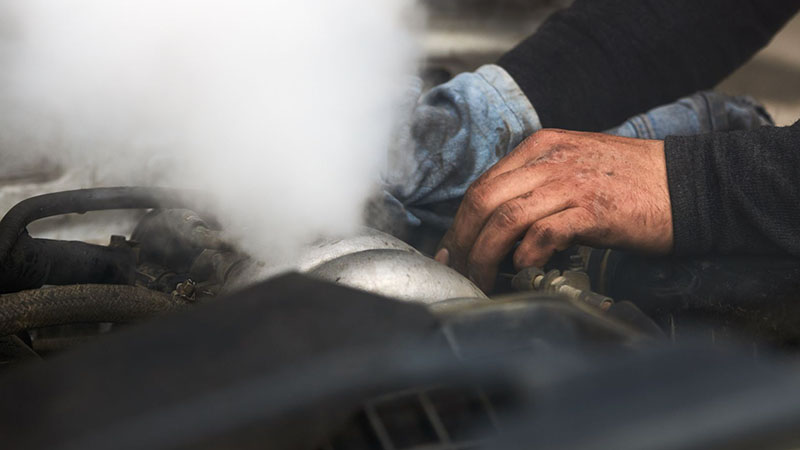
What Is Engine Blow-By?
Professionals also refer to engine blow-by as motor blow-by or simply blow-by. It denotes the leakage of combustion gases in the crankcase. The leakage occurs during the combustion process, from which the gas escapes through the piston rings.
It’s a mix of unburned fuel, water vapor, carbon monoxide, carbon dioxide, and other byproducts in an internal combustion engine. Blow-by issues primarily result from imperfect sealing between the piston rings and the cylinder walls.

Normal Combustion vs Abnormal Blow-By
1. Normal Combustion: The air-fuel mixture gets ignited in the chamber. The resulting pressure pushes the piston down to convert chemical energy into mechanical motion. Piston rings keep the chamber sealed to prevent the gases from escaping.
2. Abnormal Blow-By: Combustion gases leak past the rings into the crankcase. These gases contaminate the engine oil, increase crankcase pressure, and reduce combustion efficiency. Long-term leaks lead to oil sludge, seal failure, and power loss.
Minor vs Excessive Blow-By
1. Minor/Acceptable Limit: A default gap in the piston ring causes some blow-by (within 5% – 10%) in all engines. It converts to 1.5 – 2.0 ft3 of gas leaked/released per minute under normal operating temperatures.
2. Excessive Blow-By: Anything more than 10% blow-by becomes problematic due to mechanical wear or failure. A leak-down or manometer test can quantify the blow-by from combustion pressure.
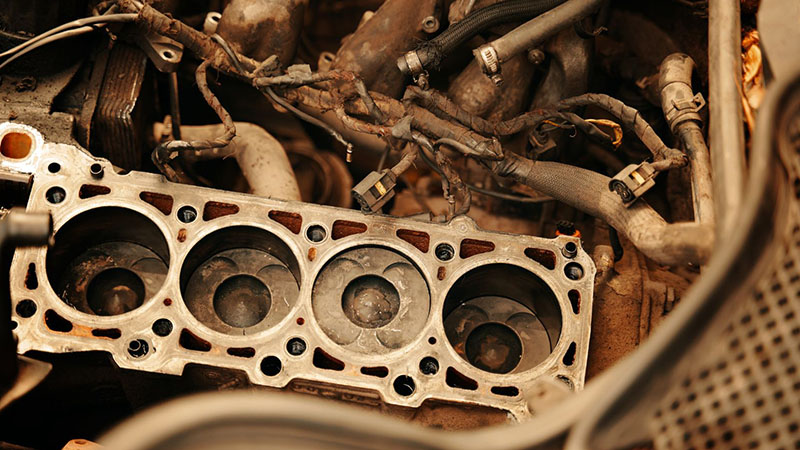
What Causes Blow-By in a Diesel Engine?
1. Poor Ring Seal
An engine’s piston rings hold a critical seal between the piston and the cylinder. They retain combustion gases, regulate oil flow, and transfer heat to the cylinder wall.
Piston rings eventually wear due to constant friction and thermal cycling. The increased gap between the ring and wall is the main cause of triggering the gaseous leak.
2. Cylinder Wall Damage
Cylinder walls can suffer from various types of damage. Scoring (deep grooves from debris/poor lubrication), pitting (corrosion from coolant leaks), and warping (thermal distortion) are the top ones.
Such imperfections interfere with the piston ring sealing by creating escape paths. Scoring occurs after prolonged operation in high-performance engines with poor filtration or contaminated oil.
3. Damaged Pistons
The piston may crack from detonation or pre-ignition. Overheating may lead to piston deformation. Even design flaws such as inadequate ring land support can alter the piston’s workability.
Ring grooves or deposits on piston surfaces can disrupt ring seating. Understandably, worn pistons reduce the effectiveness of the ring seal. It may allow combustion gases to bypass the rings.

4. Poor Maintenance (Oil Issues)
Sludge buildup may result from infrequent oil changes. Carbon deposits can trigger ring sticking. Incorrect oil viscosity reduces lubrication effectiveness.
These issues prevent piston rings from moving freely and sealing properly. Engines using low-quality oil or skipping oil changes often show elevated blow-by levels.
5. High Mileage (Engine Age)
Even with perfect maintenance, engines accumulate wear over time. Piston rings lose tension. Cylinder walls polish and widen. Even the valve seals degrade.
Engines with over 150,000 km (≈93,000 miles) show considerable increases in blow-by. It’s true even when the compression remains within specifications.

Symptoms of Engine Blowby
1. White Smoke from Exhaust or Breather
Blue smoke from the exhaust indicates oil burning in the combustion chamber. White smoke from the breather or valve cover suggests moisture/coolant contamination.
2. Oil Contamination
Dark and sludgy oil houses a fuel-like odor. Reduced oil viscosity and lubricating ability also become noticeable. Mixing of the contaminants in engine oil accelerates wear.
3. Increased Crankcase Pressure
Motor oil leaks around gaskets and seals. Dipstick pops out or oil cap hisses. Even the breather tube (oil fill tube) may emit visible vapors. The pressure forcing oil past the seals can damage the PCV.
4. Loss of Power + Efficiency
Sluggish acceleration becomes an everyday issue. You’ll soon notice poor and degrading fuel economy. The frequency of engine misfiring or hesitation also increases with time.
5. Increased Oil Consumption
Frequent oil top-ups are necessary between service intervals. Oil level drops rapidly without any visible leaks. Increased crankcase pressure also forces oil out through seals.

Effects of Engine Blow-By
| Generic Outcome | Underlying Problem | Remarks |
|---|---|---|
| Performance Issues | Power Loss | Escaping gases reduce cylinder pressure, weakening the driving force |
| Rough Idling | Unstable combustion due to pressure loss causes misfires and vibration | |
| Poor Fuel Efficiency | More fuel gets burnt as the ECU compensates for lost power | |
| Engine Damage | Oil Dilution | Mixing with engine oil affects the liquid form. It weakens the protective film and increases friction |
| Accelerated Wear | Contaminated oil leads to premature wear of pistons, rings, bearings, and valve guides | |
| Overheating | Reduced lubrication increases heat generation. Blow-by gases can also degrade coolant seals to initiate leaks | |
| Environmental Impact | Increased Emissions | Escaped gases contain hydrocarbons (HC), carbon monoxide (CO), and nitrogen oxides (NOx) |
| Pollution + Regulatory Risk | Extreme cases can trigger compliance failures with strict emissions standards (Euro 6, EPA Tier 4) | |
| Economic Disadvantages | Frequent Repairs | Blow-by often masks deeper issues like ring wear or cylinder scoring |
| Replacement | Severe blow-by may necessitate piston ring replacement, cylinder honing, or full rebuild | |
| Downtime + Productivity Loss | Blow-by-induced failures can sideline your car for days |
How to Diagnose Engine Blow-By?
1. Visual Inspection
Look For –
- Blue/white smoke from the exhaust or breather tube.
- Oil mist (vapor) around the oil filler cap or dipstick.
- Dipstick popping out or hissing sounds from the crankcase.
- Oil leaking around engine components (gaskets and seals).
Remove the oil filler cap on a warm engine. Observe for puffing or mist on the air oil separator. Upon confirmation, it’s time to do further testing.
2. Compression Test
It measures the pressure each cylinder can hold during cranking in a power stroke engine. Low readings suggest poor sealing due to damaged piston rings/cylinder.
Insert a compression gauge into the spark plug or injector hole. Crank the engine and record pressure for each cylinder. Compare readings to OEM specifications.
- Healthy Engine: 140 – 180 psi per cylinder (varies by engine type).
- Suspected Blow-by: Readings below spec or inconsistent across cylinders.
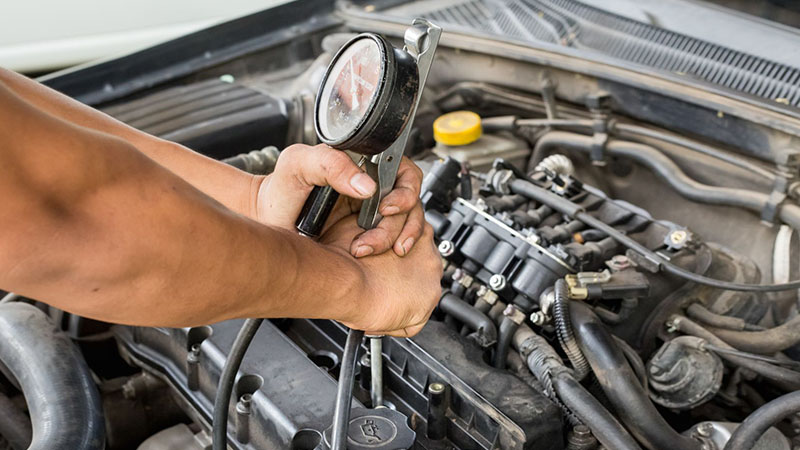
3. Leak-Down Test
It pinpoints the exact location of gas leakage (rings, valves, or head gasket). Pressurize each cylinder with compressed air while the piston is at TDC. Listen for escaping air –
- Crankcase: Piston ring blow-by.
- Intake manifold: Valve leak in the air intake.
- Exhaust pipe: Exhaust valve leak.
- Radiator: Breached/blown head gasket.
4. Crankcase Pressure Test
It quantifies the pressure buildup in the crankcase. Connect a manometer or pressure transducer to the oil filler or breather port. Measure pressure in inches of water column (in. H₂O) at idle and under load.
- Normal: <2 in. H₂O
- Excessive blow-by: >2.5” – 3”
A 1” H₂O ≈ 27 liters/min of gas flow. Engines exceeding 150 L/min at full load may require an overhaul.
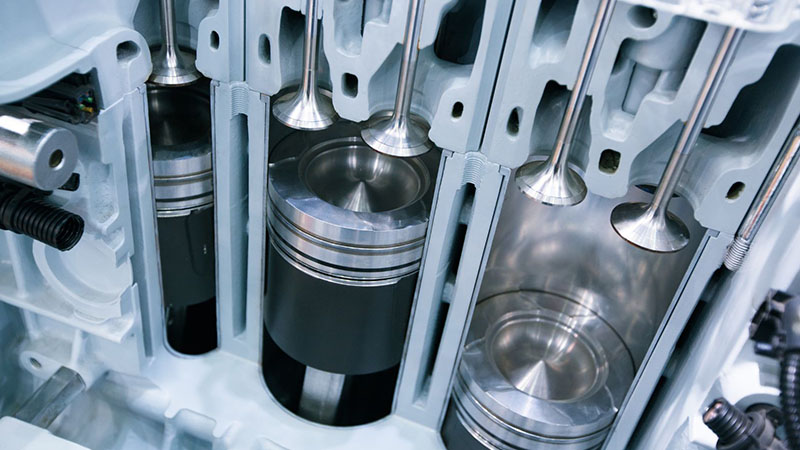
How to Fix Engine Blow-By
Engine blow-by can erode performance. Some blow-by is normal, but excessive blow-by demands attention. Fixing it requires a two-tiered approach: short-term mitigation and long-term repair.
Short-Term Fixes (Mitigation)
There are non-invasive methods at reasonable costs to mitigate the symptoms. They also delay major repairs, especially for ageing engines or budget-conscious operations.
1. High-Quality Engine Oil + Additives
Premium oils contain detergents and anti-wear agents to improve ring mobility. Additives like Rislone Ring Seal or Restore Compression Repair can –
- Soften carbon deposits.
- Improve ring-to-wall sealing.
- Free sticky piston rings.
Additives can reduce oil consumption and blow-by symptoms by 10% – 30%. Add oil treatments shortly before an oil change to flush loosened deposits, or immediately after to maximize the effectiveness.

2. Check and Replace the PCV System
The Positive Crankcase Ventilation (PCV) system recycles blow-by gases back into the intake. A clogged PCV valve or hose increases crankcase pressure to worsen the symptoms.
Remove the oil filler cap while the engine is running. If you feel strong pressure or see vapor, inspect the PCV system.
Long-Term Fixes (Mechanical Repairs)
When mitigation fails or blow-by becomes severe, mechanical intervention is necessary.
1. Replace Worn Piston Rings
Worn or stuck rings are the most common source of blow-by. They require engine disassembly, piston removal, and installation of new rings.
Piston ring replacement can cost $1500 – $3000, depending on engine complexity. Always perform a leak-down test to confirm the source.
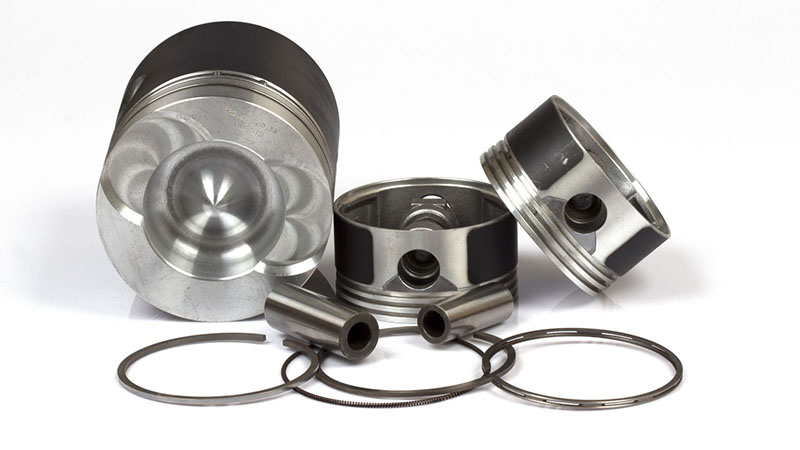
2. Hone or Re-Bore Cylinders
Cylinder wall scoring or wear prevents proper ring sealing. Honing smooths minor imperfections. Re-boring enlarges the cylinder to fit oversized pistons.
A new engine with re-bored cylinders and matched pistons can regain 95%+ of original compression. Use a precision hone with crosshatch patterns for oil retention.
3. Replace Pistons
Cracked, deformed, or carbon-damaged pistons disrupt ring function. Replace with performance-grade or OEM pistons (alongside ring and cylinder work).
4. Full Engine Rebuild
If multiple components (rings, pistons, cylinder walls, gaskets) are worn, a full rebuild may be more cost-effective. It may cost $3000 – $6000, depending on engine type and labor.
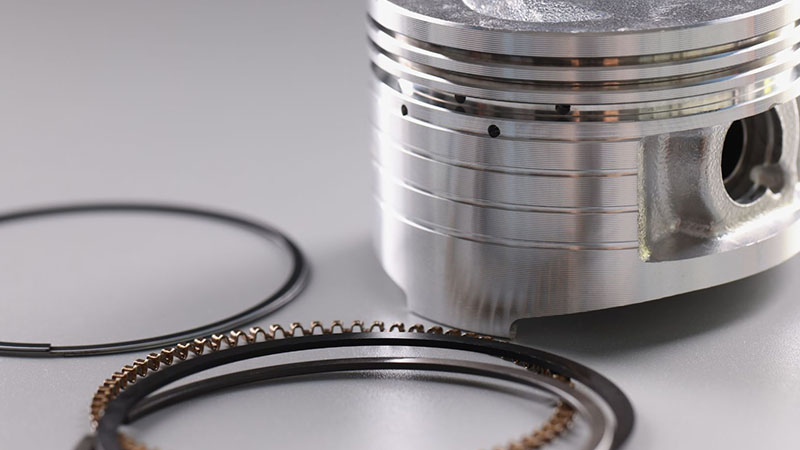
How to Prevent Blow-By
1. Proper Maintenance (Regular Oil Changes)
Routine servicing is the frontline defense against blow-by. Neglecting basic maintenance accelerates wear and invites contamination.
- Get OEM-recommended viscosity for proper lubrication and ring sealing. High-quality synthetic oils resist incomplete combustion and carbon buildup.
- Follow manufacturer service intervals for oil, filters, and PCV checks. Replace air filters regularly to save abrasive particles from scoring cylinder walls.
2. Quality Parts and Fluids
The integrity of internal components directly affects sealing performance and blow-by resistance.
- Choose precision-machined rings with high-tensile strength and wear resistance. Avoid low-cost aftermarket rings that may lack proper tension or coating.
- Invest in OEM or high-performance gaskets for thermal cycling and pressure retention. Poor seals can fail under crankcase pressure, leading to oil leaks and contamination.
- Get oils with high detergent levels and low volatility to minimize carbon deposits. Use additives with molybdenum or zinc for enhanced anti-wear protection.
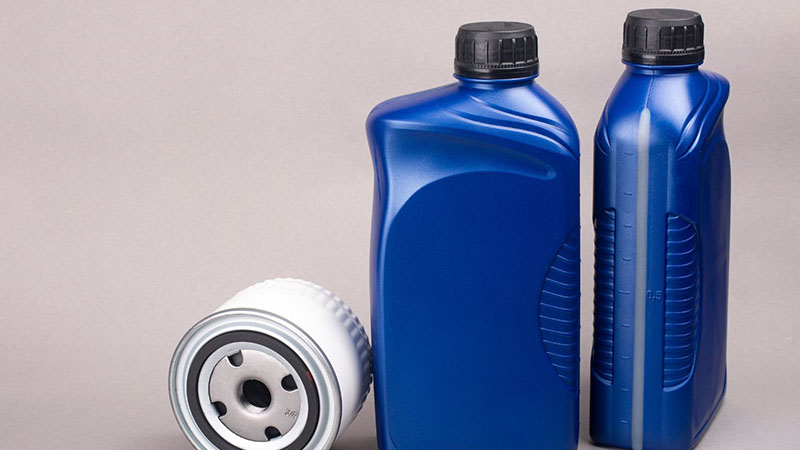
3. Smart Driving Habits
Driver behavior plays a surprisingly large role in blow-by prevention.
- Cold oil flows poorly, increasing friction and ring wear. Let the engine warm up before high RPM or load conditions.
- Monitor coolant levels and temperature gauges. Skip sustained high-load driving (uphill towing) without cooling upgrades.
When to Seek Professional Help?
Experienced DIYers can handle some early symptoms. However, accurate diagnosis and repair often require specialized tools, technical expertise, and safety protocols.
DIY Limitations
- Diagnostic Equipment: Leak-down testers, compression gauges, and crankcase pressure manometers are expensive. DIY diagnosis may misidentify symptoms (mistaking valve seal leaks for ring wear).
- Skills Needed: A deep understanding of combustion dynamics, ring behavior, and crankcase ventilation is necessary. It’s the same for interpreting results across multiple systems (intake, exhaust, lubrication).
- Safety Considerations: Engine disassembly to replace piston rings/hone cylinders involves many factors. Injury risks from pressurized systems, hot surfaces, or misaligned components become a major concern.
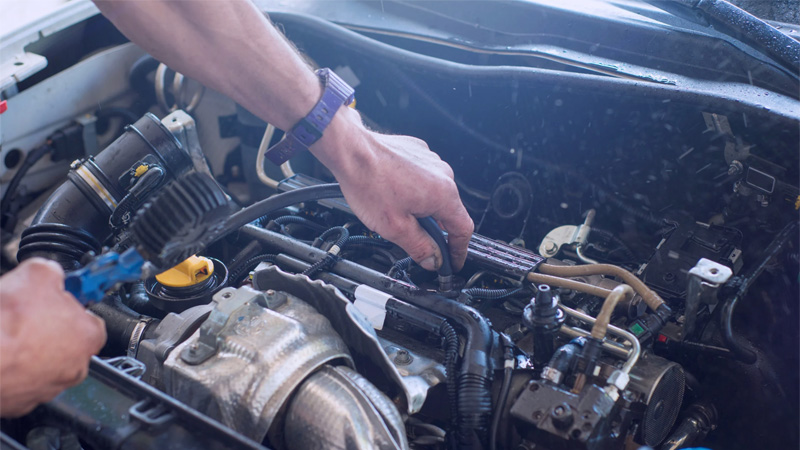
Professional Services
Seek professional help when –
- Blow-by symptoms persist despite oil changes or additive use.
- Compression or leak-down tests show inconsistent or low readings.
- Crankcase pressure exceeds safe thresholds or causes oil leaks.
DIY repairs may void OEM warranties if unauthorized parts or procedures are used. Professional repairs often include labor warranties, parts guarantees, and compliance with service contracts.
Frequently Asked Questions (FAQs)
1. Is blow-by normal in all engines?
Yes. A small amount is normal. Most engines experience 5% – 10% blow-by, translating to 1.5 – 2 cubic feet of gas per minute. Anything above 10% is considered excessive.
2. How do you diagnose engine blow-by?
Diagnosis involves several follow-up tests after inspection. The compression test checks cylinder pressure, the leak-down test pinpoints gas escape, and crankcase pressure comes from a manometer.
3. Can engine blow-by be fixed without a rebuild?
Minor blow-by can be mitigated using high-quality synthetic oil, additives to free stuck rings, and replacing/cleaning the PCV system. However, severe cases often require piston ring replacement or engine rebuild.
4. Do diesel engines experience more blow-by than gasoline engines?
Yes. Diesel engines operate at higher compression ratios, making them more prone to blow-by. This is especially true in high-mileage or heavy-duty applications like generators and trucks.
5. How long can an engine last with blow-by?
It depends on severity. Mild blow-by may allow continued operation with regular maintenance. Severe blow-by, however, can lead to rapid wear and engine failure within 10K – 30K km if untreated.
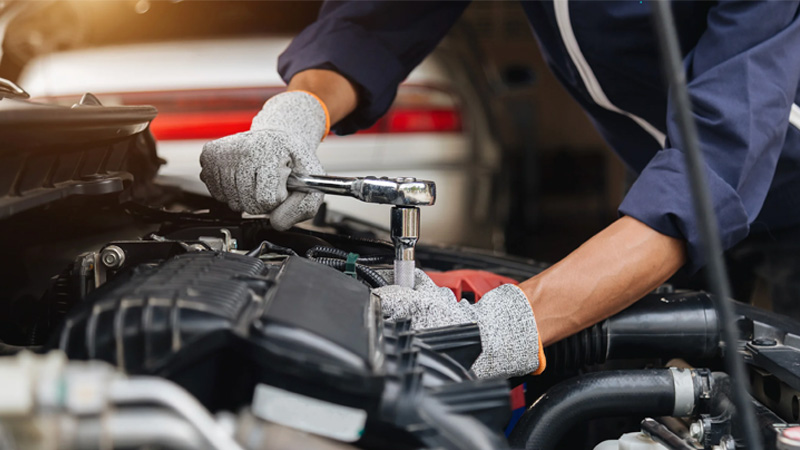
Conclusion
Engine blow-by, an inevitable flaw, becomes troublesome when it exceeds a specific limit. Knowing the causes and symptoms marks the beginning of fixing the problem. Applying proven solutions from a top-quality engine servicing should restore/repair your engine.
Fix Engine Blow-By with Confidence — Partner with Woda Auto
At Nanjing Woda Auto Technology, we bring over 25 years of expertise in high-quality engine parts and solutions. From blow-by issues to complete engine systems, our products help servicing businesses and retailers deliver reliable results.
Contact us today to request a quote and discover how Woda Auto can power your success.
